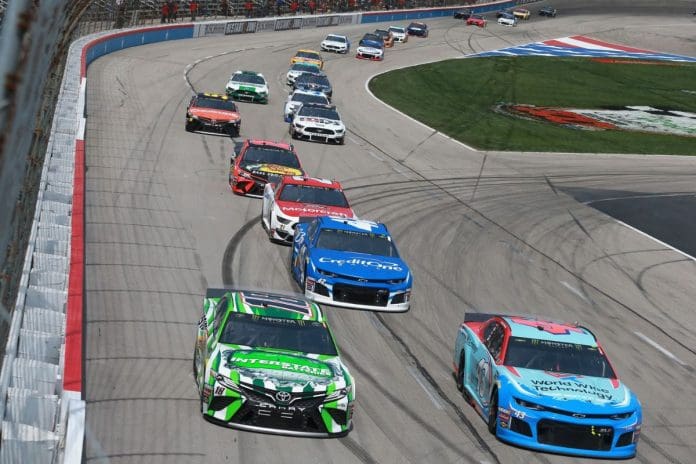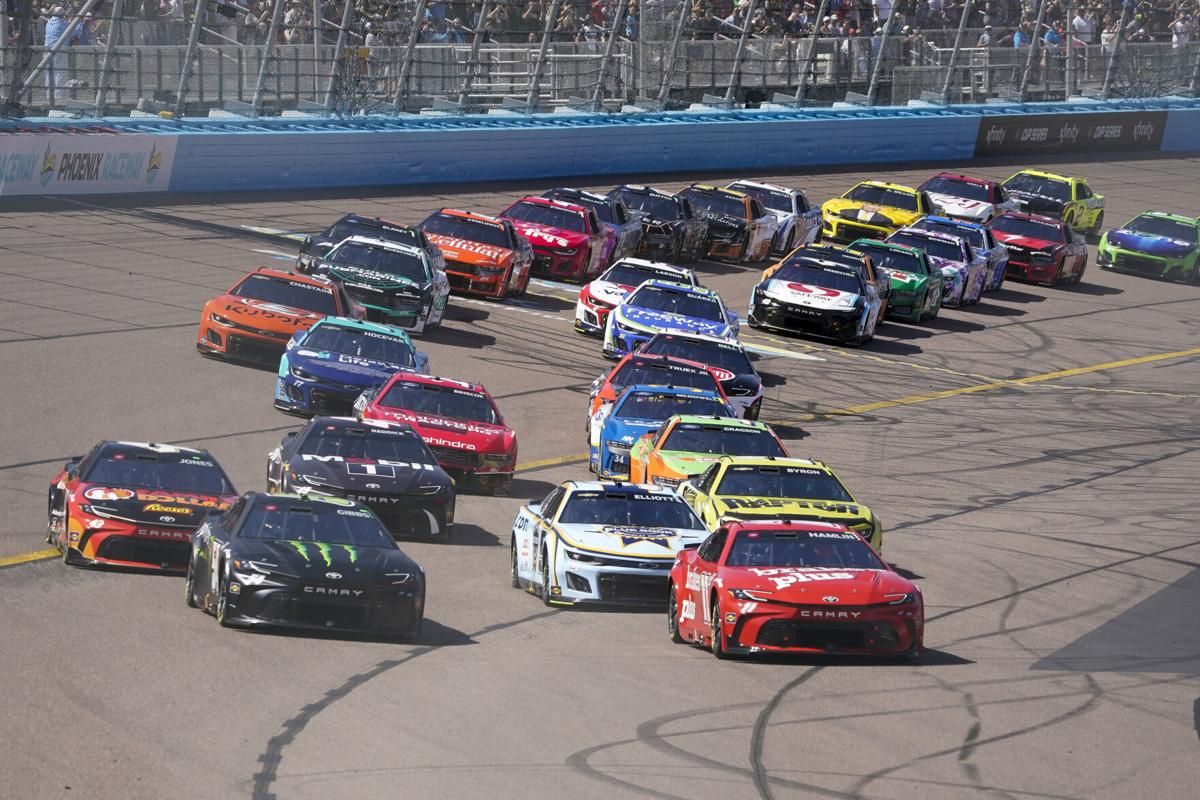Texas Race Alters 16-Year Tradition: The recent race at Texas Motor Speedway, Texas signifies a significant shift in the NASCAR landscape, deviating from a 16-year tradition with its record 16 cautions. This dramatic increase in race interruptions not only tests the agility and resilience of drivers but also highlights the advancements in vehicle safety and race management. As NASCAR races become more unpredictable and strategically complex, they offer a fresh point that could redefine fan engagement and competitive standards.
Key Takeaways
- The Texas race featured 16 cautions, disrupting traditional race flow and enhancing suspense.
- Introduction of the Next-Gen car has leveled the playing field, promoting closer competition.
- Increasing occurrences of overtime finishes, reshaping traditional race strategies.
- Shift towards young drivers indicates a significant change in NASCAR’s competitive landscape.
- Enhanced safety protocols and technological advancements signify a new era in NASCAR racing.
A Dramatic Race at Texas Motor Speedway
At the Texas Motor Speedway, the Texas Cup race unfolded with 16 cautions. Each caution flag waved a signal, pushing the race through a series of struggling, unscripted events that held the audience captive. The frequent interruptions, caused by a variety of incidents from minor to major, painted a clear picture of the stock car racing.
These interruptions serve a dual purpose: they are both a safety measure and a dramatic element that resets the competitive environment, compressing the field and amplifying the suspense. As cars regrouped, drivers changes their strategies under the challenge of maintaining peak performance, despite the stop-start nature imposed by the cautions.
The Rise of Overtime Finishes
The growing frequency of green-white-checkered finishes in NASCAR races highlights a notable transformation in the sport’s competitive dynamics. This trend was represented during the AutoTrader EchoPark Automotive 400 at Texas Motor Speedway, marking the third consecutive race to conclude under such conditions.
The last 3 NASCAR Cup Series races have had Overtime finishes
— Trey Ryan (@TreyRyan99) April 15, 2024
This the first time since the Fall of 2007 that 3 straight races have gone to Overtime, more than 16 years ago!
This is immediately after having 14 races without Overtime, the longest run in a decade. pic.twitter.com/WGd5Tdsc7I
The ‘Next Gen’ car, introduced to promote closer racing and increase safety, appears to be fulfilling its purpose by enhancing competitiveness down to the final laps. This vehicle, designed with advanced aerodynamics and modified weight distribution, encourages drivers to push their limits in the closing stages without the same level of mechanical tension experienced in previous car generations. Consequently, races are more likely to extend into overtime as drivers compete for position, knowing their cars can handle the intense, late-race accuracy.
Evaluating Fan Sentiment and Historical Trends
Understanding fan sentiment and analyzing historical trends provide essential insights into the evolving appreciation and engagement of NASCAR audiences with the sport. Recent evaluations, particularly through online polls such as Jeff Gluck’s, highlight a significant shift in viewer perception. Importantly, 74.2% of respondents rated the latest Texas race as a ‘good race,‘ a contrast to previous sentiments generally reserved for this venue.
Historically, the NASCAR series at Texas has not always created enthusiasm among its viewers. The data, as presented by NASCAR statistician Trey Ryan, points to an increasing occurrence of races concluding in overtime—each adding layers of unpredictability and excitement, factors highly valued by the audience.
Impact of Overtime and Next-Gen Car
Recent changes, including the implementation of double-lane restarts and the introduction of the Next-Gen car, have greatly enhanced the excitement and unpredictability of NASCAR races, leading to more frequent and thrilling overtime finishes. The double-lane restarts, in particular, allow for a more dynamic competition as drivers can choose which lane they believe gives them the best advantage during significant restarts.
The Next-Gen car, introduced with cutting-edge technology and specifications designed to level the playing field, has also played a decisive role in altering race dynamics. With features aimed at improving safety, performance, and cost-efficiency, these cars encourage closer racing, which naturally leads to increased instances of lead changes and tight finishes.
Jimmie Johnson’s Influence and the Future of NASCAR
Jimmie Johnson’s recent spin-out in a Gen 7 car at Texas, coupled with his reflective comments, highlights a critical moment in NASCAR’s evolution, as the sport enters in a new era of young talent and transformative technology. Johnson, a revered figure in NASCAR with numerous victories at Texas.
The introduction of the Gen 7 car marks a significant technological advancement in NASCAR, aiming to level the playing field and enhance competitive racing. This evolution is not just about the machinery but also about the changing guard in the driver lineup. Young, ambitious drivers are emerging, ready to take the on legends like Johnson.
| Aspect | Impact on NASCAR’s Future |
|---|---|
| Johnson’s Spin-Out | Symbolizes the shift to new talent and tech |
| Gen 7 Car | Promises a more competitive and equitable field |
| Young Drivers | Brings fresh energy and challenges to the sport |
| Technological Advancements | Ensures thrilling, safe, and fair races |
| Fan Engagement | Increases with closer races and new narratives |
News in Brief: Texas Race Alters 16-Year Tradition
The Texas Motor Speedway race, marked by 16 cautions, symbolizes a significant shift in NASCAR’s competitive framework. This evolution, characterized by increased safety measures and the introduction of the Next-Gen car, emphasizes the sport’s commitment to excitement and security.
The enthusiastic fan response and the strategic influence of figures like Jimmie Johnson suggest a promising future for NASCAR.
Our Reader’s Queries
Q. When was the first NASCAR race in Texas?
A. Since 1997, the 1.5-mile quad-oval has been a venue for NASCAR races each year. However, for the first time since 2019, the track is given to host a race in the springtime.
Q. What NASCAR driver is from Texas?
A. NASCAR driver Chris Buescher, behind the wheel of the No. 17 Ford Mustang Dark Horse for RFK Racing, takes a moment to contemplate his racing journey as he gears up for the upcoming Triple-Header weekend at Texas Motor Speedway.
Q. How long is the Texas NASCAR race?
A. The Cup race at Texas, known as the Autotrader EchoPark Automotive 400, spans 267 laps around the 1.5-mile track, covering a total distance of 400 miles. Divided into three segments, the race features Stage 1 comprising 80 laps, Stage 2 with 85 laps, and Stage 3 wrapping up with 102 laps.
Q. Who won the NASCAR Cup race in Texas?
A. Chase Elliott won his first NASCAR Cup victory since October, securing the win in Sunday’s race at Texas Motor Speedway after double overtime. This victory marked the end of a 42-race winless streak for the sport’s most popular driver.
ALSO READ: Christopher Bell’s Turn Four Crash: Texas Race Shakeup





